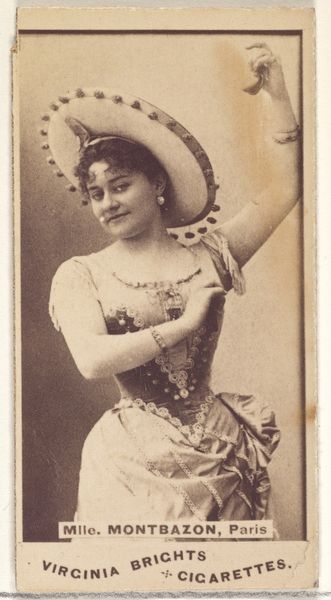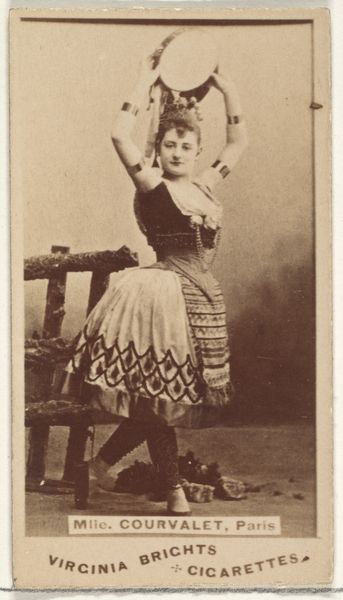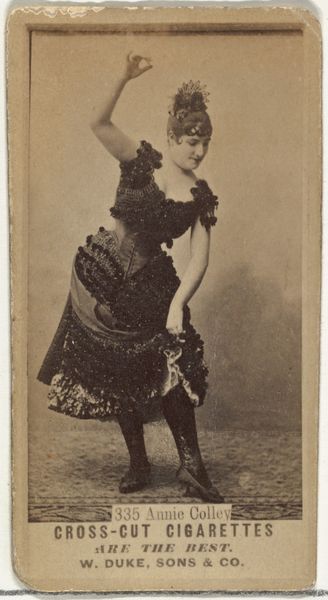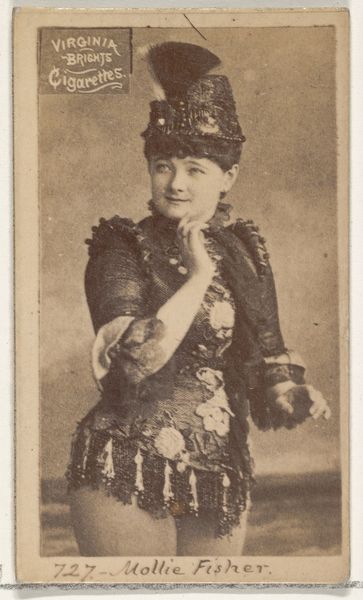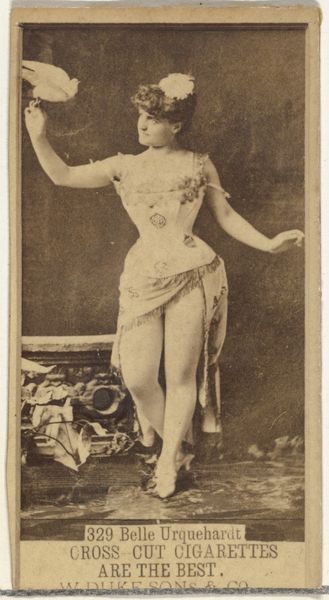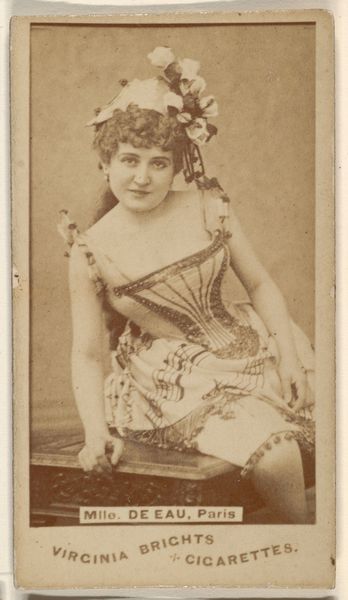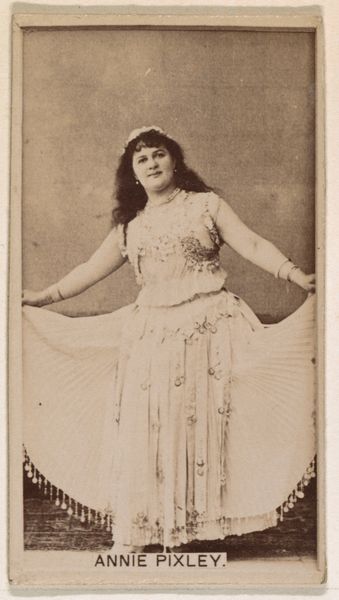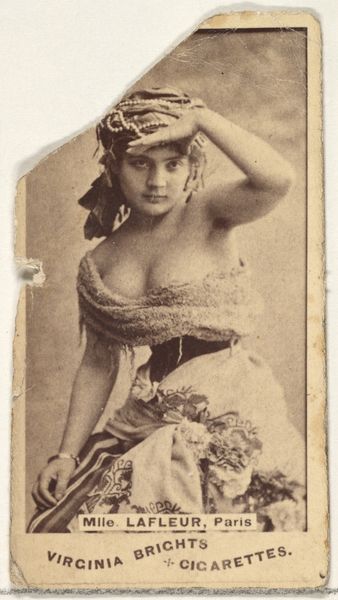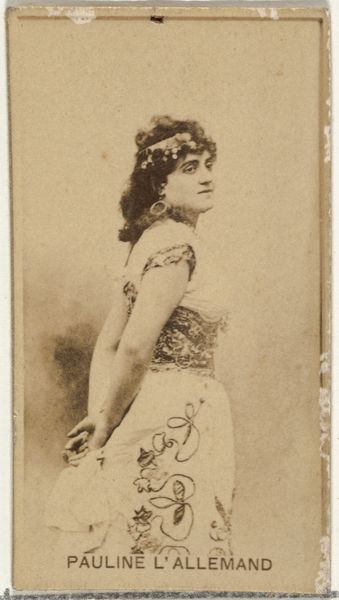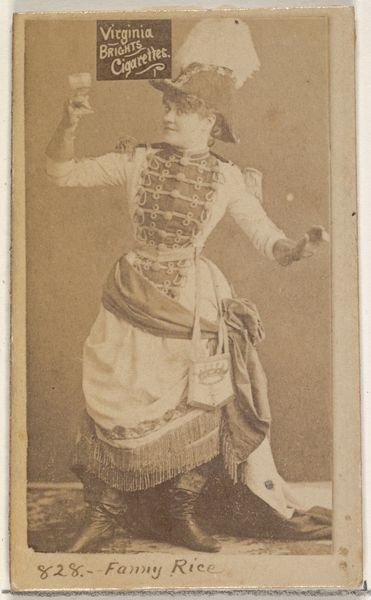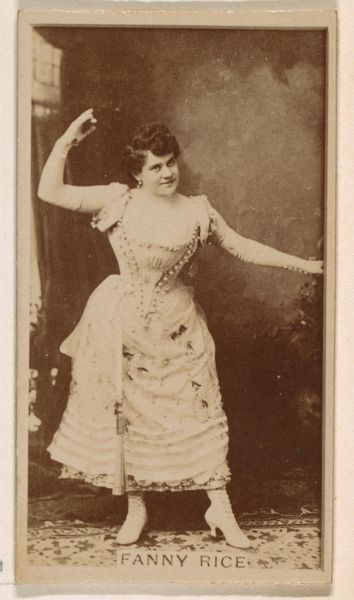
Card Number 321, Elinor Hamilton, from the Actors and Actresses series (N145-3) issued by Duke Sons & Co. to promote Cross Cut Cigarettes 1880s
0:00
0:00
drawing, print
#
portrait
#
drawing
#
aged paper
#
toned paper
#
photo restoration
# print
#
old engraving style
#
old-timey
#
19th century
#
men
#
watercolour illustration
#
golden font
#
watercolor
#
historical font
Dimensions: Sheet: 2 11/16 × 1 3/8 in. (6.8 × 3.5 cm)
Copyright: Public Domain
Editor: This is Card Number 321 featuring Elinor Hamilton, it's from the Actors and Actresses series printed in the 1880s by Duke Sons & Co. as an advertisement for Cross Cut Cigarettes. It's really aged and you can tell it was part of a collection. What stands out to you in this piece? Curator: The way these cards used celebrity endorsements reveals much about gender and commerce at the time. While ostensibly celebrating actresses like Elinor Hamilton, consider how these images also served to commodify their image and contribute to the rise of consumer culture fueled by tobacco. What does it say about women and representation in a society so eager to exploit it for financial gain? Editor: That's an interesting point; I hadn't considered the commercial aspect to be so pointed. The actress's presentation now appears less about admiration and more like strategic advertising. Curator: Precisely! Think about who was consuming these images. Was it a means to admire women like Elinor Hamilton? And how did class factor in? Were working-class women able to connect, or only middle to upper class consumers? Also consider the implications of associating female performers with tobacco use - were women being subtly encouraged to partake in traditionally male habits? It's an interplay of celebrity, consumption, and social norms that exposes a complicated web of gendered expectations. Editor: That gives me a completely different perspective on what I initially saw as a vintage photograph. The act of promoting products and consuming an image normalizes objectification and possibly shapes societal expectations. I guess I had not considered this art piece in terms of a reflection on gender and commerce like this. Curator: That's the power of engaging art with a critical, historical lens. By exploring the social fabric, we expose underlying currents that connect it with contemporary realities.
Comments
No comments
Be the first to comment and join the conversation on the ultimate creative platform.
